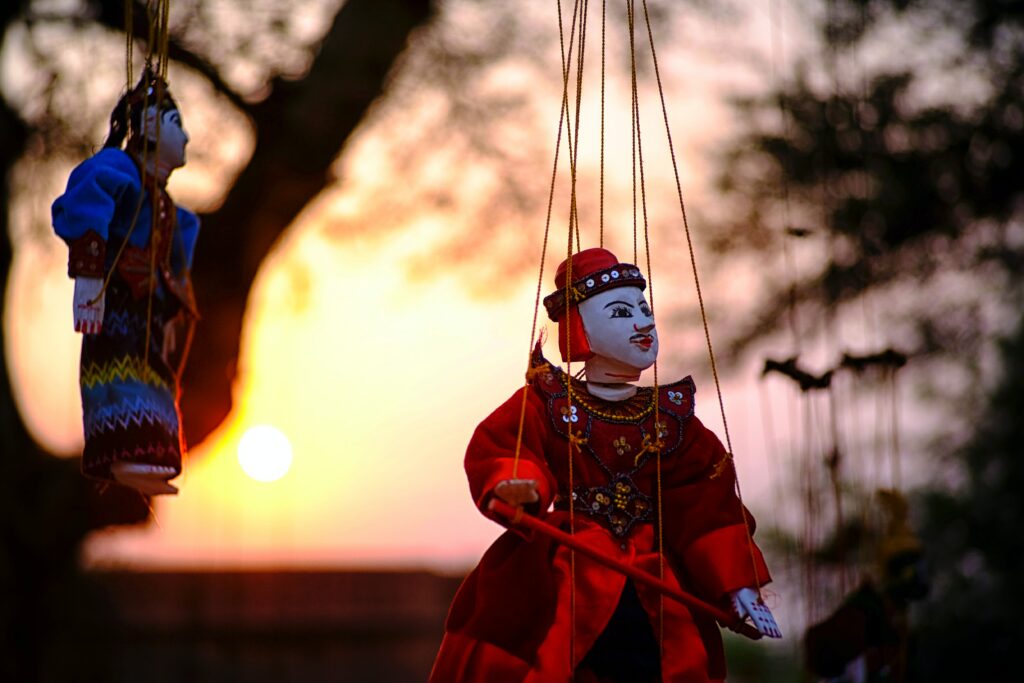Observations on the Historical Development of Puppetry
by Keith Rawlings, November 1999
Updated April 2003, March 2011, September-December 2023

Introduction
Puppetry is closely related to feats of magic and conjuring. All through history, magicians entertained in the public streets, and later, on the stage. The first magician recorded in history was named Dedi in ancient Egypt and is mentioned on the Westcar Papyrus of 1700 BC located at the East Berlin State Museum. There also exists a wall painting in Beni Hasan, Egypt, (unfortunately now submerged underwater during excavations in 1966), showing a conjurer performing for another person the famous cups and balls trick. This is dated 2500 BC. Milbourne Christopher, author of The Illustrated History of Magic, mentions: “While Dedi’s name is the only one that has survived from this period, it is probable that contemporary conjurers were performing in Babylonia, India, and China.”
These tricks possibly first originated in prehistoric times when tribal shamans (witch doctors) performed them in order to display their prowess and to retain their position of power against all those desirous of replacing them as their respective tribe’s spiritual leader. In Indonesia today the dalang (shadow player) functions as a kind of shaman performing magic (wayang kulit, or shadow play) for healing and exorcism of evil influences. Puppets, then, can be seen as a magician’s trick, where the mode of the movement of the figures is hidden from the audience.
It may be that puppets were derived from folk artists watching the spectacular public presentations of automata — presented sometimes by official players –where all techniques used to impart motion to the figures were concealed or secret. In their attempts to imitate the automata, these folk artists may have hit upon the means whereby puppets are manipulated.
In this paper we will endeavor to provide a historical outline of the development of puppetry, starting in the era BC in Egypt and India, and ending in Europe in the eighteenth century AD.
puppetryhistory.com
by Keith Rawlings (@Gmail: kewi2001)
Previous web addresses:
http://geocities.com/Broadway/Booth/8253/index.html (1999)
http://www.sagecraft.com/puppetry/definitions/historical (2003)
http://pages.citenet.net/users/ctmw2400 (2011)